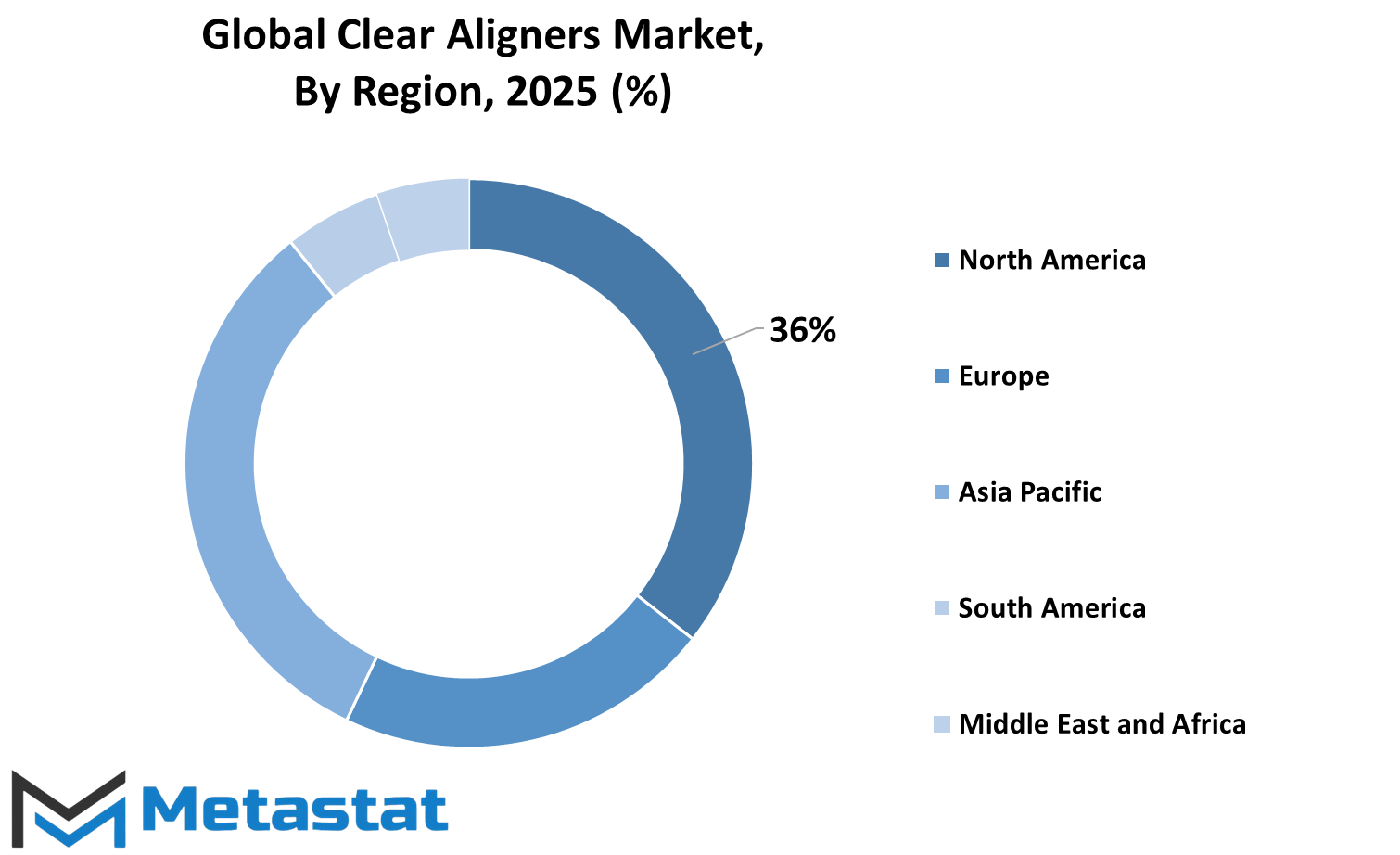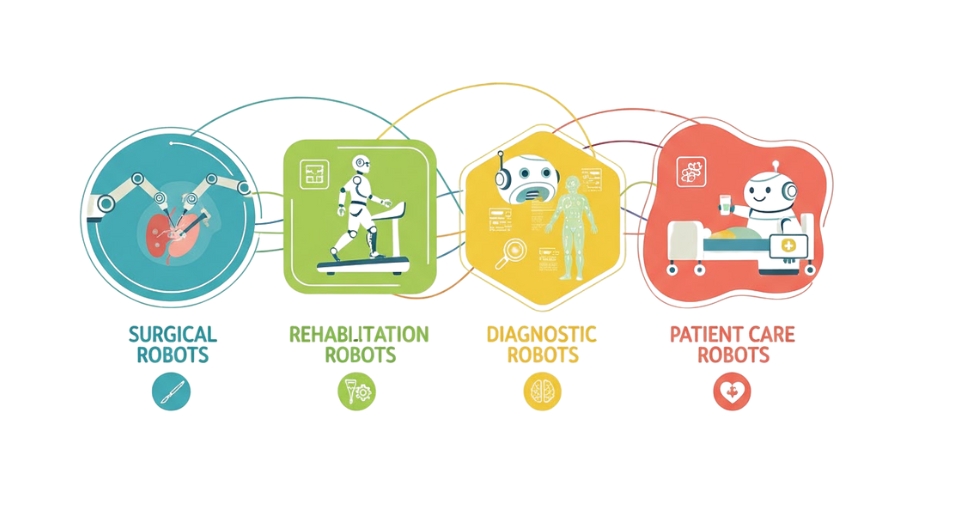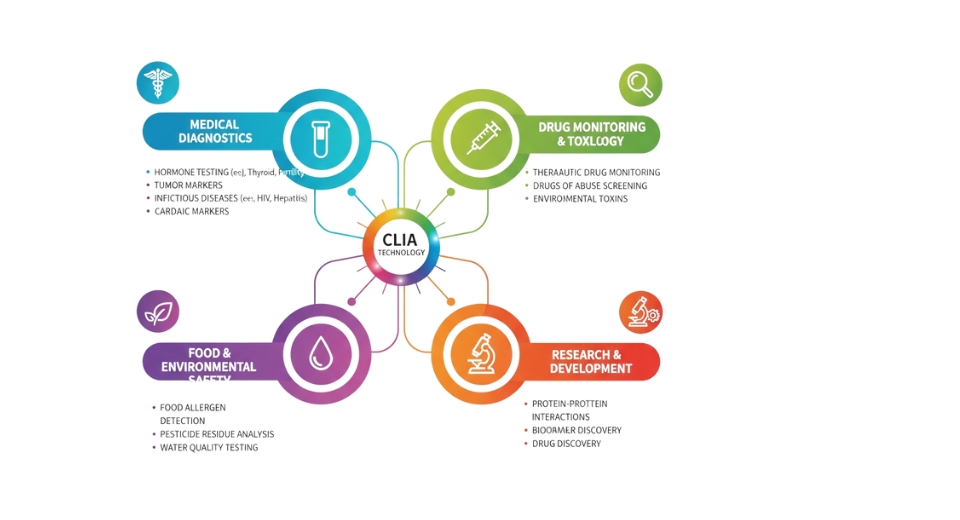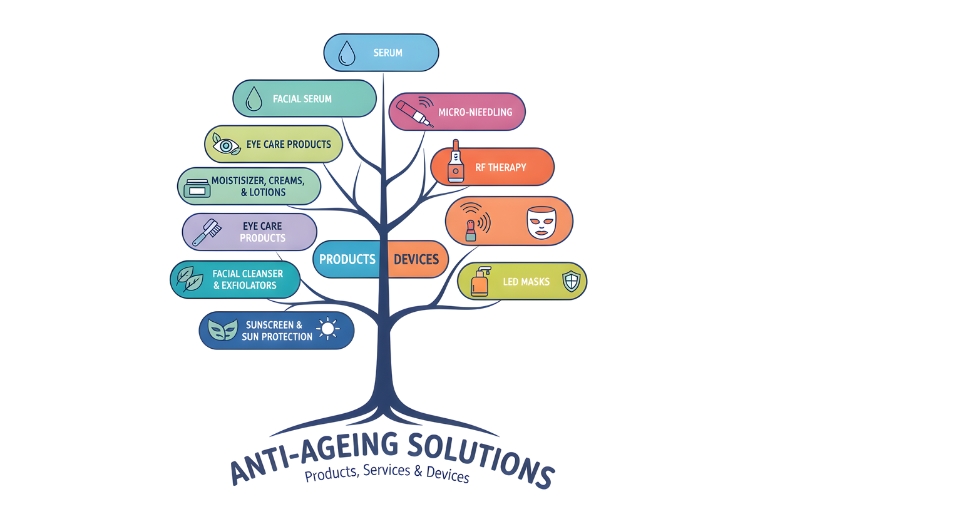MARKET OVERVIEW
The Global Clear Aligners Market represents the latest frontier in orthodontic excellence, thus redefining the concepts of dental correction across the industry. Consumer preference for aesthetic and more convenient alternatives has reinforced its standing as a forerunner in orthodontics. Clear aligners, unlike traditional braces, offer a method for the near-invisible gradual realignment of teeth, a highly attractive proposition for people who want their orthodontic treatment to be timeless. Technologies continue to transform and refine treatment efficacy, promoting less pain and enriching the experience of the patients, and hence the market continues to prosper.
The changes in the industry, however, seem to have occurred along with the advancement of 3D printing technology, artificial intelligence, and the science of materials. The merger of digital impressions and AI treatment planning provides a maximum degree of customization, enhancing patient outcomes. Aligners are becoming even more malleable to individual dental architectures with the assistance of software models and clear thermoplastics for the most effective alignment possible. Innovations in the technology will continue to set new horizons for orthodontic treatment, enlarging the horizons for what can be achieved concerning teeth straightening.
Modernization in lifestyle has changed the people in their thinking and practices towards oral health, and with the increased interest in dental aesthetics, this phenomenon is poised to be sustained. Socialization, particularly through the various digital media, is currently a very important factor that influences consumer choice, as evident by the increasing number of people who intend to incorporate their treatment into their normal lives. This soaring demand is prompting manufacturers to focus on more flexible treatment duration options, ensuring that aligners cater to a larger audience, including teenagers and adults.
The Global Clear Aligners market will keep changing according to the pressing dental needs that present themselves. Research into biomechanics and material efficiency continues to evolve; future aligners will likely evolve to increase durability and effectiveness. Smart aligner technology, which would incorporate sensors to track wear time and monitor progress, would surely assist in augmenting patient compliance and improving treatment success. The industry is on the verge of exploring comfortable biocompatible materials that will retain sufficient integrity to minimize irritation and enhance wearability.
On the other hand, notwithstanding all the advancements, the cost will always be a remaining factor that will have to be tackled in the widespread acceptance of clear aligners. Further, a conscious attempt toward reducing cost enabling the provision of lower price treatment has been deemed appropriate as long as the quality is not compromised. Wherever tele-orthodontics and direct-to-consumer aligner model setup are coming up to change treatment accessibility, this scenario of patients being able to consult with experts wherever they are. More companies ready to take up digital platforms will result in smoother personalized treatment plans with no geographical barriers, expanding the market's reach.
Global Clear Aligners market is estimated to reach $21,401.97 Million by 2032; growing at a CAGR of 18.9% from 2025 to 2032.

GROWTH FACTORS
The Global Clear Aligners market is undergoing considerable growth along with the increasing demand for aesthetic and non-invasive orthodontic treatments. Also, as individuals start becoming particular about their appearance, metal braces tend to deter people who actually wish for orthodontic correction. Clear aligners are the best alternatives which work in silence and comfort as they straighten teeth without the discomfort of brackets and wires. Therefore, the demand for clear aligners is rising internationally, especially among adults and young professionals who favor solutions that are minimally visible.
Further developments in technology are being put to work in the industry in order to achieve precise and efficient aligner treatments. The invention of 3D printing and digital scanning has markedly altered the architecture of individualized aligners ensuring a better fit with fast results. These innovations minimize the need for frequent adjustments to the comfort of patients and orthodontists alike during treatment. Digital impressions have substituted traditional molds, improving both accuracy and the comfort of patients. As material quality improves and treatment predictability comes on par with market expectations due to ongoing research, the growth of this market will be promoted further.
Despite its optimistic growth, the clinical and commercial pitfalls could undermine the efforts put forward by this market. One of the key points is the treatment cost, which in general hinders accessibility in price-sensitive markets. Clear aligners are often more expensive than traditional braces, making them unavailable for a chunk of the population. Aligner treatment insurance coverage in many regions remains limited, thus further checking their adoption. Also, clear aligners are not effective always in case of complex orthodontic treatments. Mild to moderate misalignment cases are usually well treated by clear aligners, while those with major orthodontic corrections usually require traditional braces or other treatment faculties. This limitation hampers the overall penetration of clear aligner treatments for extensive jaw realignment cases.
These limitations notwithstanding, the market still has great potential for further growth, whose opportunities are bountifully paving the way to the realization of wide adoption. A key trend has been the introduction of direct-to-consumer (DTC) brands of clear aligners that come with conveniences and hence affordability. Such brands have extended the accessibility of orthodontic treatments by introducing remote consultations and at-home impression kits to soothe the need for frequent clinic visits. This change also received momentum with the rise of teledentistry that permitted consumers to seek professional assistance without having to step out. Given the upward surge in consumer awareness, as well as the onward march of allied technology, it is likely that the Global Clear Aligners market will continue growing and work toward widening availability of orthodontic solutions.
MARKET SEGMENTATION
By Type
As patients across the globe actively seek aesthetic and comfortable alternatives to these traditional braces, the Global Clear Aligners market is all set to ignite itself into growth. With the growing desire to enhance the smile as an aesthetic feature without the inconvenience of wearing metal brackets, acceptance of clear aligners is witnessing exponential growth. With progress in dental technology and material science, more effective aligners are now in bloom, with better fit, durability, and clinical outcomes.
Material is everything when it comes to the efficiency and comfort of employing clear aligners. The various market segments as regards material type. Polyurethane-based aligners command a larger share of the clear aligner market, amounting to $5,025.67 million. This is preferred by flexibility and strength, allowing users to glide along with their daily activities. All other materials are, of course, pertinent on their own, such as polyethylene terephthalate glycol (PETG) and polyvinyl chloride (PVC), giving different degrees of rigidity and clarity. Other innovations in materials are being developed, enlarging the variety of treatment options available for the patient.
One of the major factors that propel the market growth is awareness of rapidly growing populations concerning oral health and cosmetic dentistry. The people are finally aware of how their teeth appear, and clear aligners can be a more attractive alternative for tooth alignment. Unlike traditional braces, clear aligners are removable and, therefore, allow users to maintain oral hygiene without any limitations. This feature appeals strongly to adults and young professionals who are inclined toward a less visible orthodontic treatment.
Digital dentistry has also played a role in the market. Innovations in imaging technology, 3D printing, and AI-powered treatment planning have made clear aligners precise and customized. Dentists and orthodontists can now create custom aligners tailored to individual needs for optimal results with shorter treatment time. The integration of tele dentistry also supports this trend by allowing consultations from the comfort of one's home while limiting the need for frequent office visits.
While the market has good growth opportunities, it faces some challenges. Cost remains a big hurdle for many potential users of aligners which has limited their accessibility in certain regions. Many others requiring complex orthodontic adjustments may logical need to have braces, restricting the full alternative for its conventional method. However, active research and development work is underway to enhance affordability and efficiency of clear aligners, so as to cater to diverse patient groups. Hence, with continuous updates in technology and increasing appeal toward aesthetic dental options, flourishing seems to be the upcoming fate of the Global Clear Aligners market.
By Distribution Channel
The growing number of people wanting better, at-their-own-passages teeth straightening solutions is catching attention in the Clear Aligners market. Transparent, removable trays are in at the moment. They provide comfort and convenience as an alternative treatment option to traditional braces. With increasing demand, the companies expand their distribution channels to ensure better reach and access. Direct sales, online retailers, and dental service organizations (DSOs) have categorized the market because each plays its role in consumer availability of clear aligners.
It does create a direct link between manufacturer-to-consumer in the aspect of sales rather than going through the middle-men. This way, they can maintain the quality of the products and ensure that the buyer gets the product in authenticity and in proper form for the purpose it is intended. Many of the brands do provide a consultation - either in-person or by virtually organizing an assessment - for guiding individuals on the right treatment to get. Through direct sales, one also gets the opportunity to educate consumers on a proper manner of use and maintenance, which usually brings better results regarding treatment.
Online retailers have revolutionized shopping for clear aligners. The customers can consider different brands and compare prices with reviews before deciding via digital platforms. Many of them can also offer home impression kits so that individuals can begin the treatment even before going to a clinic. This proves to be more attractive for everyone sleeping under a busy timetable or having little access to the orthodontic services. Online rules require caution to ensure all the aligners are from reputable sources and meet safety standards.
They provide a professional overview through these networks of dental professionals working together with manufacturers to provide patients with customized treatment plans. Visit a licensed provider so that the individual gets expert guidance, which is important so that aligners fit correctly and work as expected. Additionally, DSOs also follow up and take adjustments on the patient's behalf, making the whole treatment process easier and effective.
There is always a growing Global Clear Aligners market, but great efforts have been put in to improve accessibility while making patients' experiences even better. By reviewing their distribution strategy to convenience and professional supervision, organizations will continue working toward improving their distribution. Clear aligners will probably get even more in demand by the public as the best orthodontic alternative with high developments in technology and increased awareness from consumers.
By End-Users
The Global Clear Aligners market is a thing of considerable attention as people lean more towards comfort and aesthetics for teeth realignment problems. This candor aligner is a breakthrough in stating that really well orthodontic treatments now have alternatives. Whereas metal braces are said to be uncomfortable physically and sight-wise, clear aligners push into the background the aesthetics of teeth straightening. This makes them ideally suitable solutions for a person looking for efficacy without sacrifices on aesthetic appeal.
Awareness of the aesthetics of the dentition is generating a lot of demand for clear aligners. Many adults and teenagers are now opting for clear aligners instead of the conventional methods. In the shift in preference, convenience and flexibility seem to draw more notice. Unlike traditional braces that come with dietary restrictions and frequent orthodontists appointments for adjustments, clear aligners are removable. This allows the user good oral hygiene and the freedom to eat with no restrictions. Further, with the advancement in technologies, the increased efficiency and predictability of treatment using aligners have been brought about.
Different organizations of healthcare are creating a whole lot of demand for clear aligners for their ever-increasing growth in the market. Among the several end-users, the dental and orthodontic clinics are known to play an important role in the promotion and distribution of clear aligners. These clinics are the major players of the aligner treatment market as they provide the professional supervision, as well as individualized treatment design considering the specific dental structure of every patient- deep in the heart of orthodontics. Aligners accompanied by various surgical procedures may also be dispensed by hospitals. Other market segments are also entering the market for its greater accessibility through its direct-to-consumer approach, which lowers its accessibility through online consultation and at-home impression kits.
Increased awareness of dental health is in part fueled by the increase in disposable income in many regions, which is another factor propelling this market. There are now many people who once turned their backs on orthodontic treatment due to cost and are now seeing clear aligners as a feasible option. Clear aligners tend to be competitively priced, and some providers offer financing and installment payment options that make treatment less expensive. Such treatments have been publicized through social networking and celebrity endorsements.
Some paying patients did have second thoughts about getting orthodontic treatment but decided to see clear ways of getting those clear aligners. Most of the time, clear aligners turn out to be less expensive, and some providers have started offering financing and installment payment options to lessen the costs of treatment. Social networking sites and even celebrities have added spice to it.
One of the wonders of this generation has made individuals view orthodontic treatment differently than before, when they considered it out of their reach because of financial problems; they now see clear aligners as a solution. Cost-wise, these have been comparable with the best, and some service providers offer various kinds of financing and installment payment options to make these treatments affordable. This has been made possible through social media publicity and ads done by celebrities.
While the market for clear aligners keeps expanding, a few challenges are still threatened. Clear aligners are priced higher than most forms of orthodontics and present affordability issues for certain consumers. Furthermore, patient compliance is paramount since the efficacy of these aligners is dependent on continuous and regular wear.
By Age Group
Traditionally viewed as an alternative that took away from appearance, nowadays clear aligners actually seem to hold their own against the conventional metal braces for all these reasons and even more. As proceeded with striving to provide the straightening of teeth in a manner that is very little noticed and far more comfortable, clear aligners have thus been popularized in a massive way, particularly with the growing awareness of dental aesthetic and all those rapid technological developments that assure better-fit and quicker results. The opportunity and likelihood of these aligners will continue experiencing constant growth as people become even more inclined toward beauty and comfort.
The age groups that these aligners cater to include mostly teens and adults. The teens approach aligners for an alternative to wearing metal braces, which otherwise can sometimes dent their confidence in themselves and day-to-day activities. With the aligners being removable, the flexibility of maintaining oral hygiene is facilitated without any restriction on food consumption. Some parents have considered this option for their children as it is predictable treatment with digital treatment planning.
Another point made by many orthodontists and dentists is that wearing these clear aligners are a good discipline for the teenagers to practice taking care of their teeth. The actual wear time incredibly affects how well they get the results they want.
Clear aligners allow adults to treat a misalignment without the unsightliness associated with traditional braces. Perhaps noticeable wearing of braces for a profession, or doing a public-facing job makes people prefer invisible aligners for straightening their teeth, as they can go through orthodontic treatment without damaging self-esteem. Flexibility in removing aligners is possible during meal time or brushing teeth, which makes it perfect for busy individuals. New technology advances in the making of aligners also mean that even very complicated cases are now treatable, hence making clear aligners quite attractive to adults who might have deferred taking orthodontic measures much earlier in life. The emergence of customizable treatment plans also encouraged even more adults to decide upon clear aligners, which could finally align their teeth without disrupting their busy schedule too much.
As the advancements are ongoing, clear aligners find the fulfilling of all requirements in regard to fast treatment time and accuracy. The role of digital scanning, along with 3D printing, has increased the precision and enhanced the effectiveness of aligners which can provide treatment to suit different orthodontic needs. Thus, the further rounds of growth in the Global Clear Aligners market could be expected as the process is getting better with continuous innovation and hence becoming easier and readily available to a wider segment of the population.
|
Forecast Period |
2025-2032 |
|
Market Size in 2025 |
$6,527.98 million |
|
Market Size by 2032 |
$21,401.97 Million |
|
Growth Rate from 2025 to 2032 |
18.9% |
|
Base Year |
2025 |
|
Regions Covered |
North America, Europe, Asia-Pacific, South America, Middle East & Africa |
REGIONAL ANALYSIS
Technological advances, public awareness of dental aesthetics, and the growing requirements for non-invasive orthodontic treatment are some of the things driving the global market for clear aligners. It is further classified by region-North America, Europe, Asia Pacific, South America, and Middle East Africa. Given their different rates of demand buildup, each of these regions carries along an important cue in the growth of the industry.
North America occupies a prominent share in the overall global clear aligners market because of the existence of renowned manufacturers, high disposable incomes, and rising consumer preference towards aesthetic dental treatments. The North America region can be further divided into the U.S., Canada, and Mexico, of which the U.S. is the largest market. Increased numbers of orthodontists and technological innovations in clear aligners have been key growth factors for the market in this region. Increased awareness regarding oral health and minimum invasive treatments has also complemented the emergence of the market.
Another prominent market is Europe, which mainly involves the UK, Germany, France, and Italy. Rising awareness levels regarding dentofacial aesthetics, government support to care related to dental treatments, and high-end healthcare infrastructure are components that are expected to trigger the consumption rate of clear aligners across Europe. In recent years, Germany and France have continued to show steady upward momentum due to their efficient healthcare systems and an ever-increasing pool of patients who have developed an obsession with orthodontics. Regions in Europe have also increased their contribution to market growth through rising awareness about clear aligners as compared to conventional braces.
On the contrary, the clear-aligner market is growing rapidly in the Asia-Pacific region, propelled by rising disposable incomes and geographies increasing the number of dental clinics and the spread of awareness about aesthetic dental procedures. This area stretches from India, China, Japan, South Korea, and the Rest-of-Asia-Pacific region. Of such two populations with improving health-care facilities, China and India have emerged as markets for clear aligners. From the other end, the amplifying pull of social media together with it selects discreet orthodontic solutions has further strengthened the demand in the area.
All in all, Brazil and Argentina are now awakening to the fact that they are entering an ear in advanced treatments in dental healthcare, hence the increasing interest in clear aligners among their populations. Economies of scale, availability of affordable options, and influences from cosmetic dentistry trends have increased the rate of acceptance of this market. Demand is also rising at a slow pace in the regions of the Middle East and Africa, which include GCC Countries, Egypt, and South Africa. Factors such as better accessibility to treatment, investment in dental infrastructure, and increasing preference to modern orthodontic solutions are some reasons for this growth.

COMPETITIVE PLAYERS
Attention has already begun turning to the latest trends for enabling more people on their way to gaining acceptance for using clear aligners. Such clear aligners are designed specifically for being almost invisible while outrightly serving different needs under orthodontics. However, the growing understanding of tooth movement and those that involve it as technology advances means that people are increasingly choosing invisible under the effects and pain that metallic braces always stack.
Some of the industry giants include Align Technology, Institut Straumann AG, Dentsply Sirona, and 3M Company. As many other individuals engage in creating advanced design comfort and usability of aligners per orthodontic needs, with advances made over time, new materials and scanning technologies have made treatment much more accurate and efficient, making aligners available to a show more groups of people.
The very fact that clear aligners can be removed when eating and brushing teeth is also understood to entice some into using it. Aligners do not require frequent orthodontic visits as do braces for adjustments, which makes them popular. The rise of direct-to-consumer brands has also opened up the market, providing people with at-home impression kits that enable remote monitoring by those trained in orthodontic professions. This has made it a bit easier and cheaper to access orthodontic care, especially for people who may not have a dental clinic close by.
This information reveals that although the clear aligners market is increasing, it faces hurdles such as high prices and the need for compliance by patients. Indeed, to be effective, they must be worn most of the day, and their use depends largely on the user's commitment. Furthermore, not all orthodontic cases could be treated by aligners alone, and some will still require conventional methods such as braces or other correction measures. However, constant research and technological advancement have tried to furnish these issues, making aligners continuously within the reach of their possible masses as a possible solution to a broad spectrum of dental misalignments.
This means that while more and more people are getting to know the benefits of these clear aligners, the market is expected to keep growing. It is paramount to note that focusing on the aspect of cost and quality in addition to the emerging technologies, clear aligners will increasingly be embraced as a trend of modern-day orthodontics.
Clear Aligners Market Key Segments:
By Type
- Polyurethane-based
- Polyethylene Terephthalate Glycol (PETG)
- Polyvinyl Chloride (PVC)
- Others
By Distribution Channel
- Direct Sales
- Online Retailers
- Dental Service Organizations (DSOs)
By End-Users
- Dental and Orthodontic Clinics
- Hospitals
- Others
By Age Group
- Teenagers
- Adults
Key Global Clear Aligners Industry Players
- Align Technology, Inc.
- Institut Straumann AG
- Dentsply Sirona
- 3M Company
- Envista (Ormco Corporation)
- Henry Schein, Inc.
- Candid Care Co.
- Byte
- Smilers
- Angel Aligner
- Smile White Holdings Limited
- Smile2Impress
- Sunshine Smiles Orthodontics
WHAT REPORT PROVIDES
- Full in-depth analysis of the parent Industry
- Important changes in market and its dynamics
- Segmentation details of the market
- Former, on-going, and projected market analysis in terms of volume and value
- Assessment of niche industry developments
- Market share analysis
- Key strategies of major players
- Emerging segments and regional growth potential








 US: +1 3023308252
US: +1 3023308252






